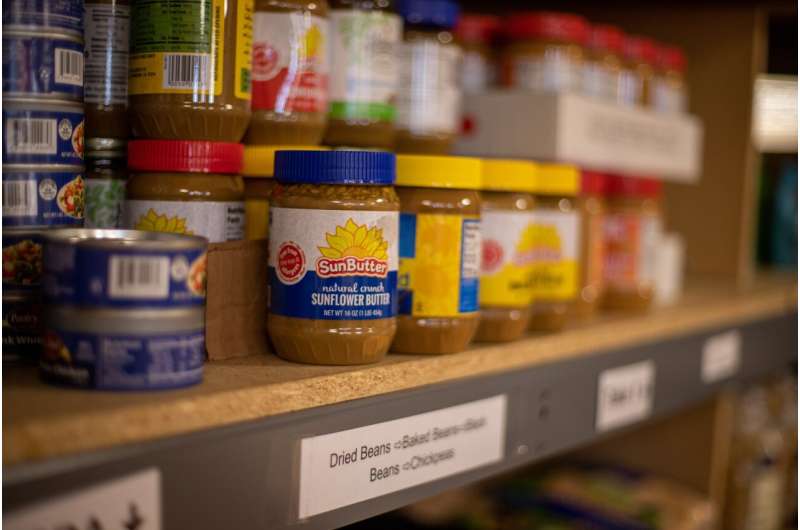This article has been reviewed according to Science X's editorial process and policies. Editors have highlighted the following attributes while ensuring the content's credibility:
fact-checked
peer-reviewed publication
trusted source
proofread
Rates of food insecurity in US may be significantly higher than surveys suggest

During the first few years of the COVID-19 pandemic, the United States Department of Agriculture (USDA) and some local governments may have underreported the percentage of Americans who experienced food insecurity by up to one-third. That's the finding from a new study spearheaded by the USC Dornsife College of Letters, Arts and Sciences' Public Exchange, published by the American Journal of Preventive Medicine.
Food insecurity is defined as not having access to enough food to maintain an active and healthy lifestyle for all individuals in a household.
At the end of every year, the USDA collects data from American households about food spending, access to food, and other topics through its Current Population Survey. These data showed national food insecurity rates did not change significantly between 2019 (10.5%), 2020 (10.5%), and 2021 (10.2%). For California, the USDA reported that food insecurity declined one percentage point in 2019-2021 from 10.6% in 2016-2018.
The USDA's recent data for California is in stark contrast to data from Los Angeles County, collected weekly by the USC research team and the U.S. Census' Household Pulse Survey. For example, the data from the Household Pulse Survey suggests that from February to April-May of 2020, L.A. County's food insecurity rate more than doubled to 21.8%.
Investigating the frequency with which people are surveyed—and therefore how far back in time they are asked to recall—might explain the significant discrepancy between the USDA's California data and the available data for L.A. County. Researchers with USC asked Los Angeles County residents questions related to their recent food security experiences 11 times throughout 2021. They found that in December, one-third of respondents who had reported food insecurity earlier in the year did not report it again when asked if they had experienced food insecurity at any point that year.
"Memory plays a key role in accuracy," said Kayla de la Haye, the lead researcher and associate professor of population and public health sciences at Keck School of Medicine of USC. "That's why the timeframe during which a survey is conducted is vital, as recall is biased against events that are less frequent or further away."
Based on their findings, de la Haye and her colleagues believe the USDA and other government health departments may be underreporting the true extent of food insecurity by one-third.
"Policymakers are ill-prepared to address the causes of food insecurity and to develop effective solutions if they don't have accurate data," said Michelle Livings, a Ph.D. candidate at USC Dornsife Spatial Sciences Institute. "That's why it's so important for government organizations who are doing public health surveillance to reevaluate the frequency with which they survey people on this issue."
To improve the accuracy of food insecurity estimates, the researchers recommend that the USDA and other agencies conduct surveys multiple times a year that ask people about their experiences of food insecurity for shorter time periods. For example, over the past week or past month. Further research is needed to determine the optimal recall period for food insecurity surveys.
The report identifies areas for future research, including:
- How under-reporting food insecurity may lead to underestimating its impacts on population health
- To what degree under-reporting of food insecurity within communities of color impacts efforts to document and address food access inequities
- Why individuals with higher incomes were more likely to under-report food insecurity.
More information: Michelle S. Livings et al, Food insecurity is under-reported in surveys that ask about the past year, American Journal of Preventive Medicine (2023). DOI: 10.1016/j.amepre.2023.03.022




















